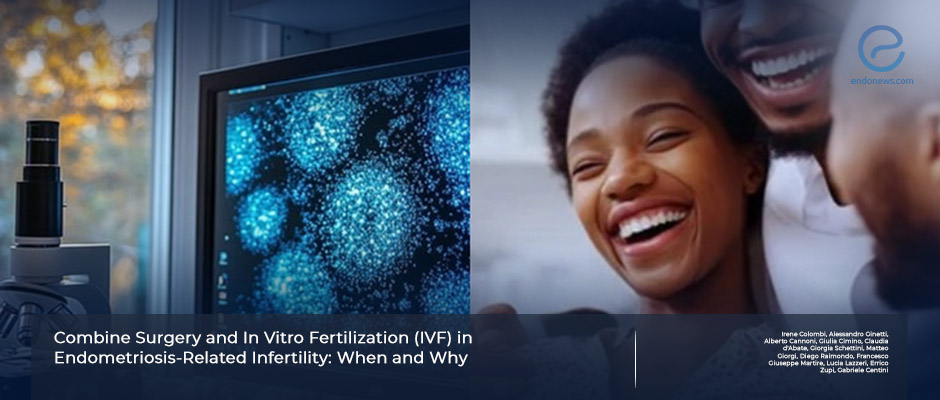The current management of endometriosis-related infertility.
Feb 4, 2025
A narrative review of the treatment options of endometriosis-related infertility.
Key Points
Importance:
- Laparoscopic surgical excision and in vitro fertilization (IVF) are the two primary approaches for managing endometriosis-related infertility.
- Determining when to prioritize one over the other remains a challenging and uncertain aspect of treatment and should be strictly personalized.
Highlights:
- Surgery should be considered only for symptomatic patients or when all other potential causes of infertility have been ruled out.
- IVF is generally preferred over surgery in cases of endometrioma.
- The decision to perform surgery before assisted reproductive technology (ART) should be individualized based on each patient’s condition.
What's done here:
- An Italian research team conducted a literature review on the reproductive implications of endometriosis and its management strategies, excluding adenomyosis cases.
- Three studies were identified as particularly relevant for understanding the management of endometriosis-related infertilityafter exclusion of reviews, opinion articles And meta-analyses.
- The authors examined:
- The impact of endometriosis based on its localization and its role in infertility.
- The optimal timing of treatment.
- The importance of an individualized approach.
Basic outlines:
- Endometriosis affecting the anterior compartment usually invades the bladder, but it could also be a part of deep endometriosis that spreads the posterior compartment, especially the cul-de-sac. The overall pregnancy rate after the surgery was more than half of the cases and the spontaneous pregnancy rates were predominant.
- The posterior compartment is the most affected area of endometriotic lesions notably 80% localized in the cul-de-sac. In the articles subjected to the review, more than half of the preoperatively infertile women were conceived after the surgery and those were also predominantly spontaneous pregnancies.
- In asymptomatic patients who have endometriosis-related infertility, the first choice is IVF without surgery, and this approach is increasingly accepted.
- Contrary to the ASR/ASRM guideline, current evidence doesn't demonstrate any benefit of primarily performing laparoscopic surgery on OMA due to the negative impact on ovarian reserves.
Lay Summary
Endometriosis is a chronic disease affecting women of reproductive age, often presenting with pelvic pain such as dyspareunia, dyschezia, and dysuria, or inertility, and significantly impacting quality of life. Management should be individualized based on symptoms, reproductive goals, age, and patient preference. The choice between surgery and ART depends on clinical factors, with first-line IVF generally recommended for asymptomatic deep endometriosis cases.
Colombi et al., from the University of Siena, reviewed endometriosis-related infertility, focusing on surgical roles by analyzing 1,035 PubMed articles. Following PRISMA 2020 criteria, 18 were relevant, but only three met inclusion criteria, excluding adenomyosis cases, metaanalyses and reviews.
Bladder endometriosis is the most common in the anterior compartment but is often associated with posterior compartment disease. The posterior compartment is the most affected, where surgery carries higher risks of postoperative organ dysfunction. Pregnancy rates exceeded 50% post-surgery, with spontaneous conception being predominant.
Ovarian endometriosis surgery options include drainage, coagulation/ablation, or cyst wall excision. Preoperative ovarian reserve should guide decision-making, as surgery before ART mainly improves pain and follicle accessibility. Conservative surgery may benefit early-stage cases, with laser or plasma energy being more tissue-sparing than bipolar diathermy. Surgical decisions are particularly delicate for low ovarian reserve or bilateral endometrioma cases.
Surgical management of peritoneal endometriosis remains debated, as pregnancy outcomes depend on tubal adhesion status. While surgery can improve tubal function, IVF-ET remains a viable alternative.
This review was recently published in Journal of Clinical Medicine.
The role of surgery for peritoneal endometriosis remains a debate. Spontaneous pregnancy after surgery depends on the presence of tubal adhesion. Surgery can lead to overcoming the adhesions but as an alternative treatment, IVF-ET could be planned.
This review was recently published in J. Clin. Med.
Research Source: https://pubmed.ncbi.nlm.nih.gov/39685807/
invitro fertilization assisted reproductive therapy infertility combine surgery chronic pelvic pain endometriosis.

